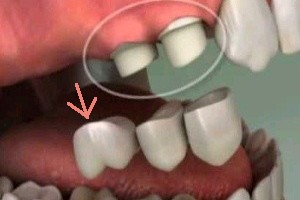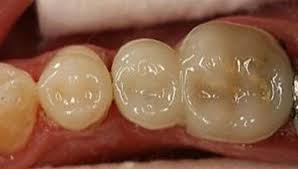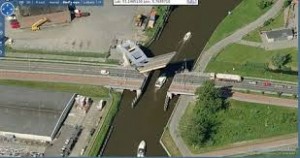A Cantilever Bridge is a bridge that is built, using structures that project horizontally but is only supported on one end. Most people may be more familiar with the concept of Cantilever Bridges which is built for people and traffic to cross than Dental Cantilever Bridges, but the concept is still the same.
A Dental Cantilever Bridge is a dental bridge which is supported by one/usually more teeth, only on the one side of the replacement tooth (pontic), rather than on both sides.

Dental Cantilever Bridge
Although implants are often the optimal treatment choice to replace missing teeth, cantilever bridges can be great in cases where implants are not possible due to financial, medical or other reasons. Cantilever bridge can also be used as a temporary solution until an implant or denture can be done.
Benefits of a Dental Cantilever Bridge
- A dental cantilever bridge can be placed when there are only suitable teeth to retain a pontic (false replacement tooth) on one side of the gap. Teeth that are quite mobile, have problems with infection, failed root canal treatment or have root decay are usually not suitable to use as a bridge anchors.
- It may not be ideal to grind down a perfectly beautiful and healthy tooth in order to retain a bridge. A cantilever bridge can then be utilized where it is not necessary to use the teeth on either side of the space to retain it.
- In some cased the abutment tooth on one side is already supporting another prosthetic restoration and can therefore not be utilized.
- There may not be any teeth to support the bridge on one side of the gap, for instance when it is the last tooth in the arch. This type of bridge should be done with caution as the biting forces should not be too high for the supporting tooth/teeth.

Cantilever Bridge replacing the back tooth.
- A Cantilever Bridge may be less expensive than a more traditional bridge as the bridge may have fewer units.
- It is much easier to floss underneath a cantilever bridge than a bridge fixed on both sides. The floss can easily glide through between the bridge and the tooth on the side that’s not fixed to the bridge.
Disadvantages of a Cantilever Bridge
- A cantilever bridge is not as stable as a bridge that is fixed on both sides of the pontic.
- As the biting forces are acting outside the axis of a cantilever bridge, there is a lot of extra pressure on the supporting teeth. The risk of damage to the supporting teeth or problems with them is therefore high and treatment planning is extremely important in order to prevent such problems.
- Cantilever Bridges can only be used in very specific cases. This is only an option if one missing tooth needs replacing. Ideally the tooth that needs replacing should be a relatively small tooth like a lateral incisor or a premolar. On the other hand, the supporting teeth should be large teeth with strong roots, e.g. one/more molars to replace a premolar or a canine to replace a lateral incisor.

Small premolar pontic retained by large molar.
- Care should be taken to make sure biting forces will be spread evenly throughout the mouth and that the burden on the bridge will not be excessive.

